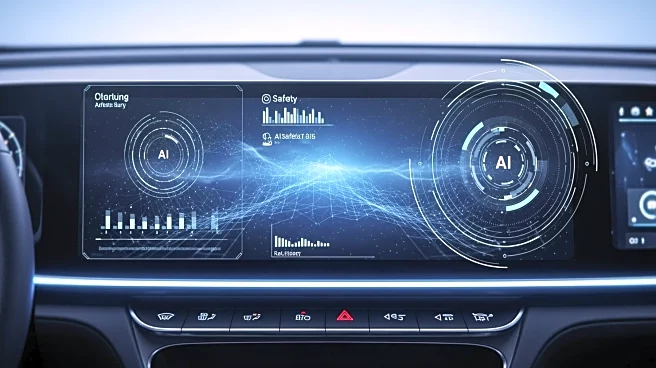What's Happening?
Researchers at Johns Hopkins University have developed an AI tool called SafeTraffic Copilot, designed to predict traffic accidents based on changes in traffic light timing and other variables. The tool uses
large language models to analyze data from over 66,000 accidents, including road conditions and driver behavior. The AI aims to provide infrastructure designers and policymakers with insights to reduce crashes and fatalities. The model can evaluate risk factors and offer confidence scores to guide decision-making.
Why It's Important?
The development of AI tools for traffic safety has the potential to significantly reduce accidents and save lives. By providing data-driven insights, SafeTraffic Copilot can help policymakers implement effective measures to improve road safety. The tool's ability to adapt to different traffic conditions and cultures makes it versatile and applicable in various regions. As traffic fatalities continue to rise, innovative solutions like this AI tool are crucial for addressing the complex factors contributing to accidents.
What's Next?
The implementation of SafeTraffic Copilot could lead to more informed decisions regarding traffic management and infrastructure design. Policymakers may use the tool to test different scenarios and optimize traffic light timings to enhance safety. The AI's adaptability to different regions suggests potential for international collaboration and expansion. As the tool gains traction, further research and development may focus on integrating additional data sources and refining predictions.
Beyond the Headlines
The use of AI in traffic safety raises ethical considerations regarding data privacy and the transparency of AI decision-making processes. Ensuring that AI tools are used responsibly and effectively requires collaboration between researchers, policymakers, and communities. Additionally, the focus on AI-driven solutions highlights the need for investment in technology and infrastructure to support safer transportation systems.











